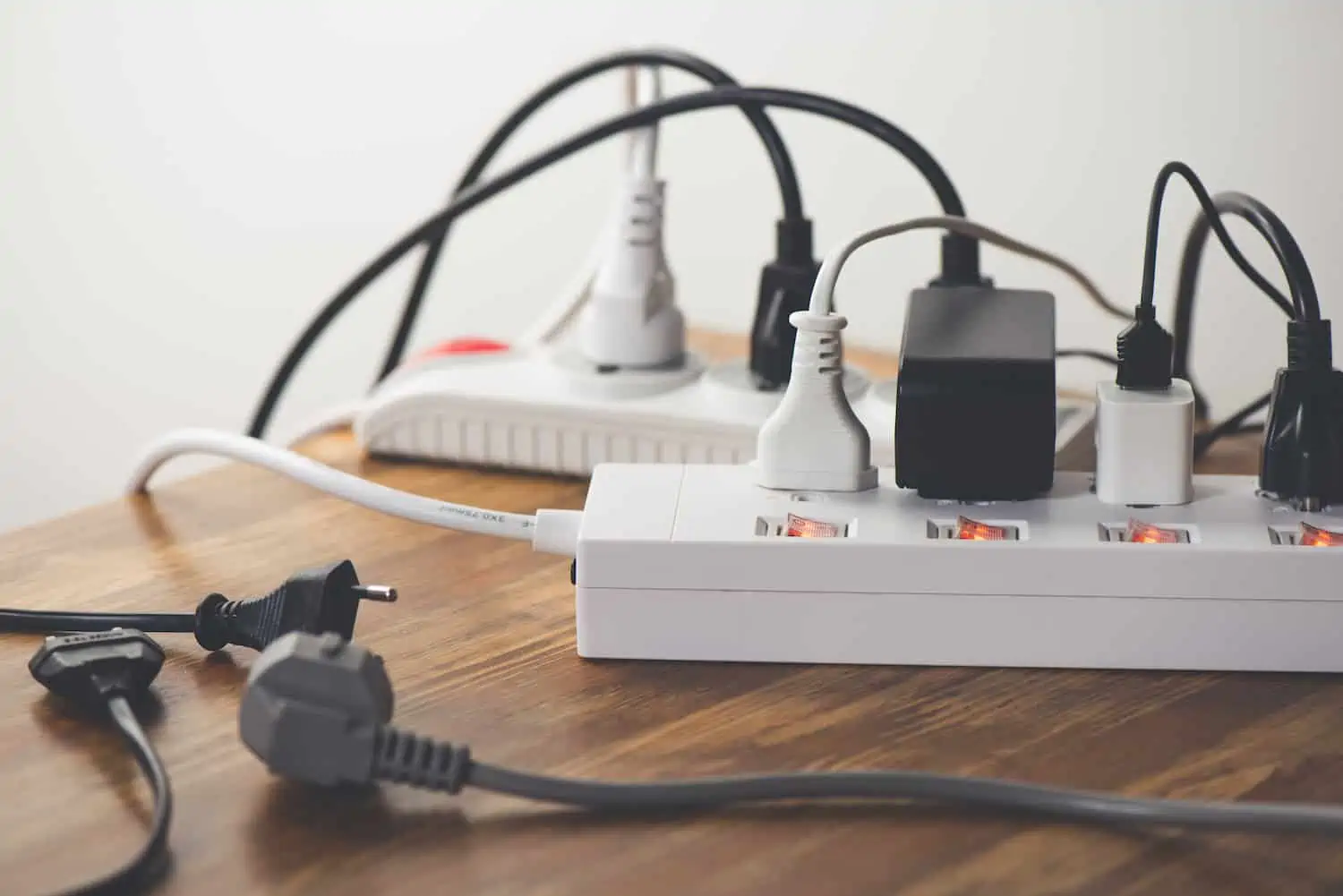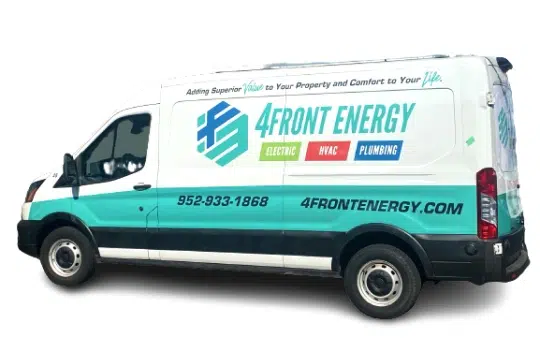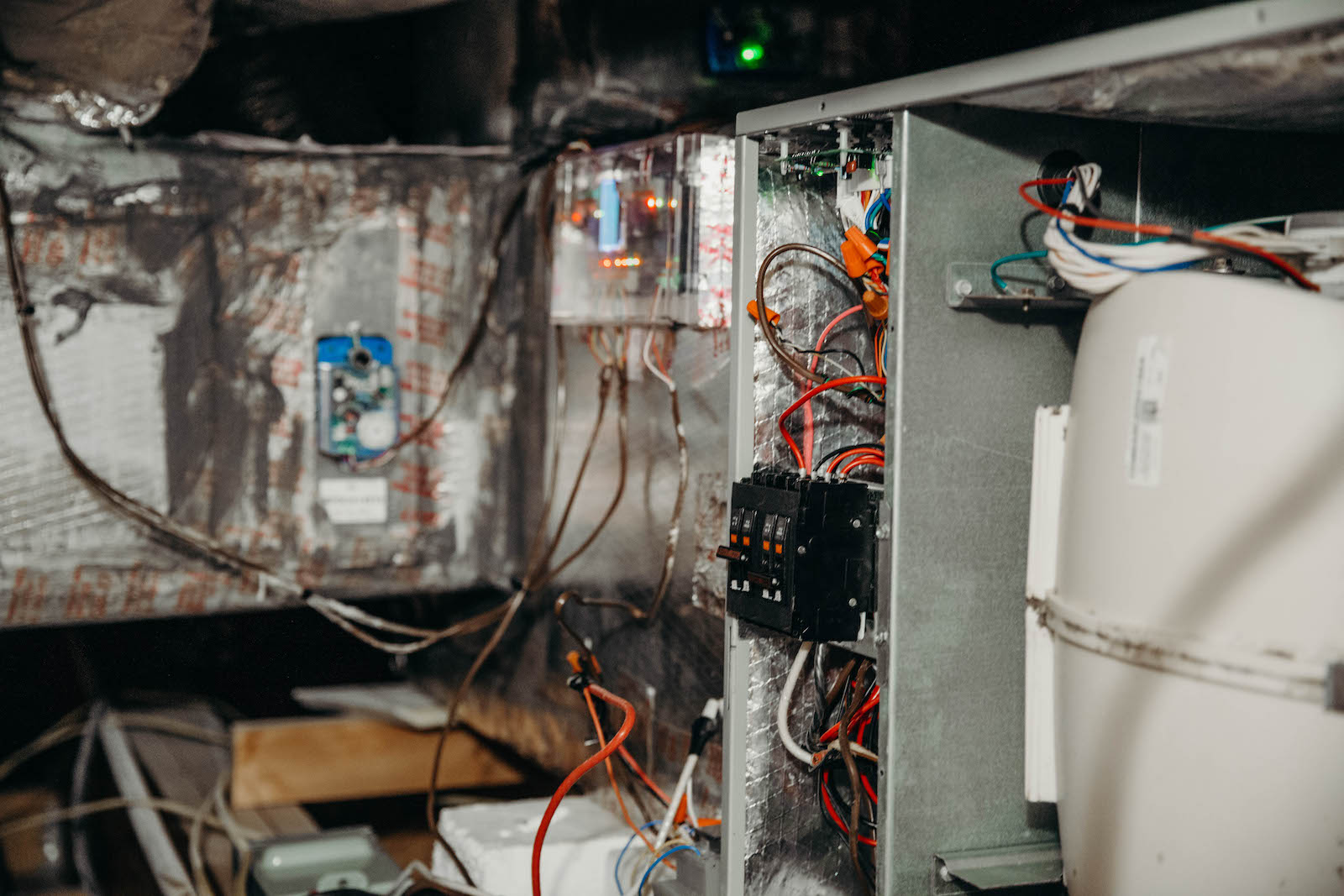Alternating Current (AC) vs. Direct Current (DC): What’s The Difference?

AC and DC power may remind you of the “High Voltage” Australian rock band AC/DC. 🎸 And we’d bet that the band borrowed the inspiration for its name from science class. But besides jamming out in the car, how do AC and DC currents work in our day-to-day lives?
Here at 4Front Energy, we’re big fans of installing electric vehicle (EV) chargers for homes and businesses. And when it comes to electric vehicles (or anything that runs on a battery), AC and DC power play important roles.
Let’s take a closer look at the difference between AC vs DC power and how they apply to EV charging.
What Is AC Power?
Alternating current (AC) power is the standard form of electricity that comes out of regular power outlets across the country. AC power is defined as a power charge that periodically changes direction.
The electrons in an AC current can move in a positive (upward) or negative (downward) direction. This causes the AC current to change between positive and negative.
Think of AC currents as a wavy line across a graph. This wavy motion means that AC power can travel farther than DC power, which is beneficial for delivering power through power outlets.

All power on the electrical grid is AC power. The “grid” is the means through which power is generated, transmitted, and distributed to the users. All electricity you use in your house operates on the grid. Even larger household appliances use AC power, including:
Washing machines
Refrigerators
Lamps
Garbage disposals
Toasters
Dishwashers
What Is DC Power?
Direct current (DC) power is a linear (or direct, as the current is aptly named) electrical current that moves in a straight line. DC energy only moves in one direction rather than in multiple directions like AC. It can come from various sources, like:
Batteries
Fuel cells
Solar cells
Some modified alternators
AC power can get transformed into DC power with the help of a converter. This conversion process comes into play because most electronics rely on DC power (think of any device that uses a battery). A transformer can work to raise or lower the voltage to the appropriate level for each particular device.
Electric vehicles run on DC power since they operate with a large battery that requires frequent recharging. However, most EV chargers use AC power. So how does that work? Let’s take a look.
How Do They Pertain to EV Charging? 🚗⚡🔌
AC and DC power sources are directly applicable to electric vehicle charging. There are three different levels and types of EV charging, but before we explain those levels, let’s dive into how the power conversion process works for electric vehicle charging.
Since electric vehicles run on a battery, they use DC power to operate. But most electric vehicle supply equipment, or charging stations, are connected to AC power. Regardless if the charging station uses AC or DC power, the EV battery will only store DC power.
An EV charging station actually does the conversion process as it charges your car. The AC power from the grid converts to DC power within the charging station, which allows DC power to flow directly to the battery.

The 3 EV Charging Levels
Now, when is the AC to DC conversion process necessary for electric vehicles? There are three charging levels, and levels 1 and 2 use AC power. Level 3 uses DC power.
Level 1 Charging
Level 1 is the slowest type of EV charging. However, it’s one of the easiest ways to charge an EV because it uses a standard 120v outlet. These outlets are found all throughout homes and other properties and are the same ones used for charging phones and plugging in lamps.
Since this level uses standard outlets, it converts AC power from the grid to DC power in the charging process.
Level 1 charging works for people who don’t drive their cars very often because it takes roughly 20 hours to achieve a full EV charge.
Some advantages of level 1 charging include:
Works well for people who don’t drive often
No additional electric work needed
Don’t need to purchase a charging system
Level 2 Charging
Level 2 charging is another form of EV charging that uses AC power. It is popular for homeowners, although it usually requires some electrical work to get an outlet in an accessible location for your car. Level 2 charging uses a 240v outlet, which is the same outlet used for larger appliances like washers and dryers.
The increased voltage allows your EV to charge much faster than level 1. You can get a full charge with a level 2 charger in about 3-8 hours. If you plan to drive your EV almost every single day, it’s a worthy investment to install a level 2 charger.
Advantages of level 2 chargers include:
Much faster charging than level 1
Can be installed in homes
Can charge more than one EV at once
Level 3 (DC Fast) Charging
Level 3 charging is also called DC fast charging because it uses DC power. And since it uses DC currents from the get-go, the conversion process isn’t required. Remember how AC power is wavy and DC power is a straight line? Since this power is so direct from the source to the destination, the charging time is incredibly fast.
Many level 3 chargers can produce an 80% charge in 30 minutes or less. A full charge can be achieved after an hour or so. Sounds great, right? Unfortunately, DC fast chargers are not compatible with the standard grid, so you can’t install one at your home (unless you’re building a brand new house and have a lot of money to spare for the special electrical wiring required).
However, you can find level 3 chargers at public locations like hotels, gas stations, rest stops, and department store parking lots. They’re wonderfully convenient for topping off your EV charge while out and about or on longer road trips.
Perks of level 3 chargers include:
Fastest EV charging possible
Convenient for road trips and running errands
When It’s Important to Pay Attention to AC and DC Power 💡
Usually, electricity is out of sight and out of mind. We plug in our curling irons, charge our phones, and turn on our lamps without thinking about what’s going on behind the scenes. Most electricity is sourced on the grid, which means almost everything we use starts with AC power, even if it’s eventually converted to DC power.
However, it’s important to consider the differences if you’re an electric vehicle owner. It’s wise to read up (just like you are now!) on how AC and DC charging levels affect your car. As long as you understand that AC power is what you have access to at your home and that AC power sources take longer to achieve a full charge, then you’ll be set up for success.
It can be easy to want the fast charging speeds that come with level 3 chargers all the time.
There may come a day far, far in the future when newly built homes automatically come with the capabilities for DC fast charging, but we aren’t there yet.
In the meantime, the best charging option for EV owners is to get a level 2 AC charger installed at your home. This makes it quite simple to charge your car overnight and have a full charge to use the next day.
The investment for the electrical work required to have a level 2 charger installed is definitely worth it. Usually, it only costs around $1,000-$2,000 for the installation, which is a fantastic investment in the long run.
Get a Level 2 AC Charger Installed Today!
If you’re an electric vehicle owner, level 2 AC chargers are your best friend. Here at 4Front Energy, we love making our clients’ lives easier by installing convenient level 2 chargers at an affordable price.
And now that you’re an expert in the difference between AC and DC power, rock out on your air guitar and reach out to 4Front Energy today. We’ll install a high-performing level 2 charger at your home or business in Minnesota!
Request Service

Why Choose 4Front Energy?
We’re a Service Company, Not a Sales Company
- Licensed, bonded & insured contractor
- Trusted Twin Cities service provider for nearly 30 years
- Reliable service excellence
- One number for electric, HVAC, and plumbing
- Stand behind our work with integrity
- Fair and straightforward pricing
- Provide invaluable comfort and integrated efficiency
- Technicians that take pride in their work



